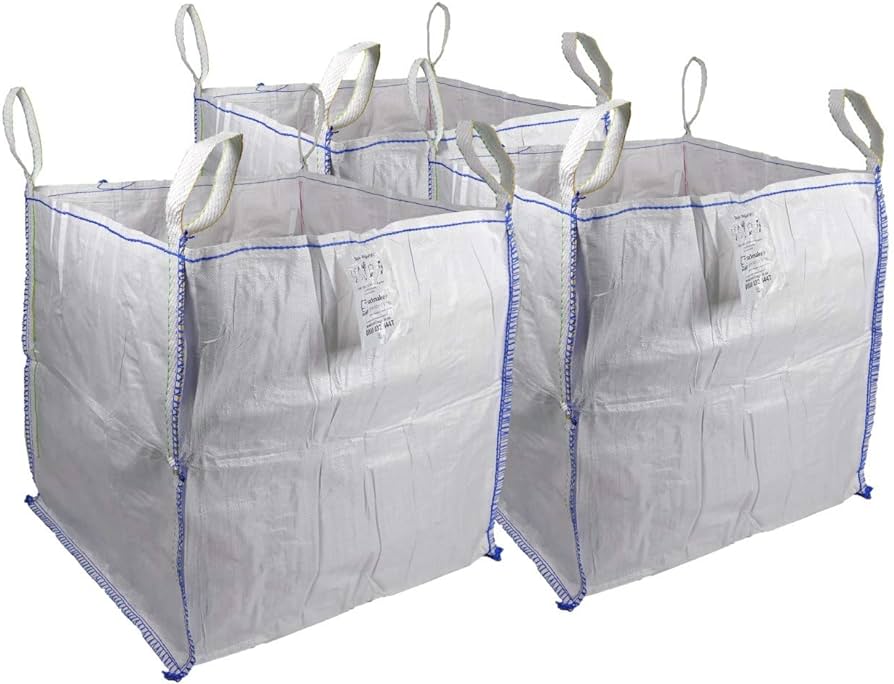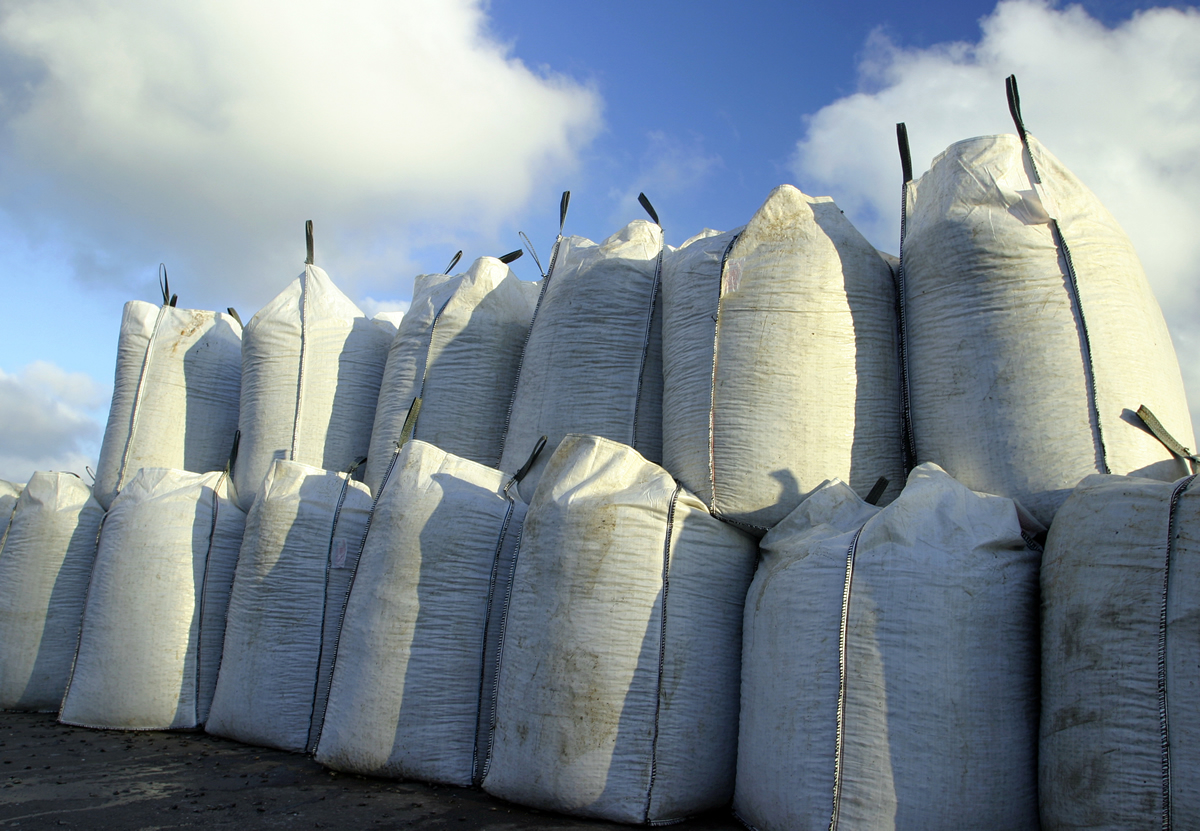This article explains how big a builders’ bag is, which is also known as a bulk or dumpy bag, to help you determine the right size for your construction and landscaping projects. Credit: Amazon UK A standard builders’ bag is typically around 90 cm x 90 cm x 100 cm (35-39″ x 35-39″ x 39-43″) in size. This gives a capacity of around 1 cubic metre or 1 tonne of loose material such as sand, gravel or soil. The large cubic shape allows builders’ bags to hold a substantial volume of materials. Builders’ bags are an indispensable tool on construction sites. Their sturdy design and generous capacity make transporting loose materials much easier. Knowing the typical 90 x 90 x 100 cm dimensions gives a useful guide when estimating quantities. We think builders’ bags are a smart innovation that hugely improves efficiency on building projects. The 1-tonne capacity is ideal for materials like sand or gravel. We recommend builders’ bags for easily moving bulk materials around sites. Builders’ bags are commonly available in sizes ranging from 90 cm x 90 cm x 100 cm (35″ x 35″ x 39″) to 90 cm x 90 cm x 150 cm (35″ x 35″ x 59″). The most popular dimensions are: These polypropylene bags have a fabric density of 140gsm or higher for strength. When filled, the 90 x 90 x 100 cm bags can hold around 300 logs or 0.81 cubic metres of materials like sand. The larger 150 cm tall “Jumbo” bags can hold up to 1 tonne. Most builders’ bag sizes refer to the external dimensions. However, the internal capacity may be slightly less – around 2-3 cm less for each measurement. So a 90x90x90 cm bag may have internal dimensions of 86x86x87 cm. The most common builders’ bags feature an open top and plain base. Extra features like lift loops, discharge spouts or plastic liners are also available. Knowing the typical builders’ bag sizes allows you to estimate how much material you can transport and store. Just remember to measure your space and load to find the perfect bag for your needs. Credit: builderbags.co.uk The capacity of a builders’ bag depends on its dimensions. As mentioned, popular sizes range from 35″ x 35″ x 39″ up to 35″ x 35″ x 59″. To calculate the volume and capacity: As an example, a 35″ x 35″ x 39″ builders’ bag has internal dimensions around 0.9m x 0.9m x 1m. So its capacity would be approximately 0.81 m3 or 810 litres. This 810-litre volume could hold around 300 bricks, 0.5 cubic metres of topsoil, or 1 tonne of gravel. Bulk densities vary for each material. For larger capacity, a 35″ x 35″ x 59″ builders’ bag with internal dimensions of 0.9m x 0.9m x 1.5m would hold about 1.2 m3 or 1,200 litres. Knowing the volume helps estimate how much you can fit. But always check the safe working load too, as the weight capacity depends on the fabric density and dimensions. When using a builders’ bag, an important consideration is how much weight the bag can safely hold. This depends on the density and strength of the fabric. Typically, builders’ bags have a safe working load of between 500-1,000kg. The larger and denser the bag, the higher the load it can handle. For example, a medium 35″ x 35″ x 39″ 0.8 m3 bag may have a 500 kg capacity. But a 35″ x 35″ x 59″ 1.2 m3 bag could hold up to 1,000kg. Overloading beyond the safe limit risks the bag ripping or handles tearing. So always check the manufacturer’s recommended weight limit. The weight capacity does not change based on the material loaded. A 500 kg-rated bag can hold 500 kg of topsoil, gravel, or any other loose bulk material. When estimating how much to load, consider the material’s density. For instance, a 0.8m3 bag with a 500 kg capacity could hold: So check the weight limit of your builders’ bag before loading. This ensures safe lifting and carrying without damage. Builders’ bags are versatile containers suitable for carrying many construction materials. What fits depends on the bag’s volume and weight capacity. Typically, medium 0.8 m3 bags with 500 kg capacity work well for: Larger 1.2 m3 bags with around 1,000 kg capacity can handle bigger loads such as: When estimating quantities, consider the material’s density and confirm it’s within the bag’s rated capacity. This prevents overloading and damage. With the right bag, you can safely transport most loose or packaged construction materials. You just need to check the weight limit before filling. Builders’ bags have many applications on construction sites and DIY projects. Their versatility makes them a staple for professional builders and home improvers. Here are some of the most common uses: With their durability, portability, and ease of use, builders’ bags are workhorses for managing all types of loads. Whether you need to transport aggregates across a worksite or tidy up garden waste, a high-quality bag makes the job simpler. A standard builders’ bag has a capacity of around 1 cubic metre or 1 tonne of material such as sand, gravel or soil. The exact capacity depends on the dimensions. A builders’ tonne bag is typically around 90 x 90 x 100 cm (35-39″ x 35-39″ x 39-43″), giving a volume of around 1 cubic metre. A standard builders’ dumpy bag measures approximately 90 x 90 x 100 cm (35-39″ x 35-39″ x 39-43″). This gives a volume of around 1 cubic metre. A standard 1-tonne builders’ bag holds 1,000 kg or 1 metric tonne of material such as sand, gravel or soil. The total weight depends on the density of the contents. In summary, a standard builders’ bag is around 90 cm x 90 cm x 100 cm in size, with a capacity of approximately 1 cubic metre or 1 tonne of material. Builders’ bags are a sturdy and convenient way to transport loose materials like sand, gravel and soil to building sites. Knowing the typical dimensions and capacity of these bags is useful when estimating quantities and planning projects.
How Big Is A Builders’ Bag?

Key Points
Our Opinion
Typical Builders’ Bag Dimensions
Capacity of a Builders’ Bag

Weight a Builders’ Bag Can Hold
Contents That Fit in a Builders’ Bag
Popular Uses for a Builders’ Bag
FAQ
What is the capacity of a builders’ bag?
What size is a builders’ tonne bag?
How big is a builders’ dumpy bag?
How many kg is a builders’ bag?
Conclusion
This website uses cookies so that we can provide you with the best user experience possible. Cookie information is stored in your browser and performs functions such as recognising you when you return to our website and helping our team to understand which sections of the website you find most interesting and useful.



